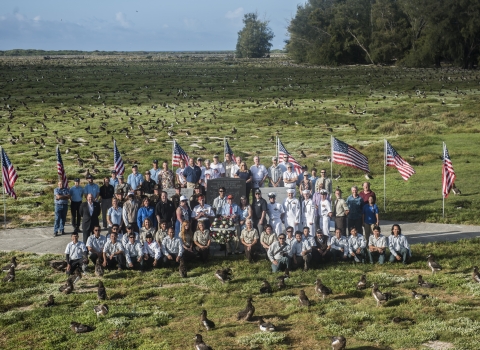As many people here in the United States were preparing for Thanksgiving, I was thinking about snapping turtles, glass frogs, and jaguars.– or any other wildlife species that’s traded. During the holiday I was in Panama City, Panama, as part of the U.S. delegation to the 19th Conference of the Parties to the Convention on International Trade in Endangered Species of Wild Fauna and Flora (CITES CoP19).
CITES is celebrating its 50th anniversary this year, and it serves as proof that species conservation and the economy can go hand in hand. CITES doesn’t ban international wildlife trade. It regulates it, as needed, to ensure that international trade in plants and animals doesn’t threaten their survival in the wild.
As anyone who knows about the American alligator market will tell you, the legal and sustainable trade that CITES requires encourages conservation that keeps populations healthy. As Dr. Rosemarie Gnam, head of the Service’s Division of Scientific Authority for CITES, says of the alligator, “We took a species that was on the brink of extinction in the 1960s, and after a short period without any harvest, we were able to reopen the commercial trade in a way that is biologically sustainable and legal.”
The CoP, which happens every two or three years, was an incredible experience that gave me insight into how other nations and cultures value fish and wildlife species. It also confirmed for me the vast importance of capacity-building efforts to ensure CITES’ success. Many of the most celebrated plants and animals on Earth come from countries without the needed capacity to manage the trade in those species. CITES is only as strong and effective as each of its member nations.
We are working to help every nation have what it needs to manage its wildlife trade to keep those celebrated species – and the ones most aren’t familiar with, like sea cucumbers – around for the benefit of future generations.
Starting in 2018, we began providing financial assistance, in the form of scholarships for students representing areas with high biodiversity and limited capacity for wildlife management, to attend the CITES Masters Course offered at Spain’s Universidad Internacional de Andalucía. We have been able to support students from Latin America, the Caribbean, and, in partnership with the Department of the Interior's International Technical Assistance Program, Central and East Africa.
Our staff has also served as lecturers and thesis mentors.
I was excited to see that many of the CoP delegates who are helping lead CITES into the future are graduates of this course.
CoPs are not just about adding species to the CITES Appendices to regulate their trade. They’re also about making decisions to improve the status and use of species in trade. At CoP19, the United States, Nigeria, Canada, Côte d'Ivoire, Kenya, Mexico, and Senegal proposed ways to decrease transport mortality for CITES-listed species. The proposal, which was accepted and went into effect in February 2023, included recommended making sure all member nations have access to transport regulations as well as training on them.
It doesn’t need to be Thanksgiving for me to be thankful for CITES and its 50 years of ensuring that international trade in plants and animals doesn’t threaten their survival in the wild.




